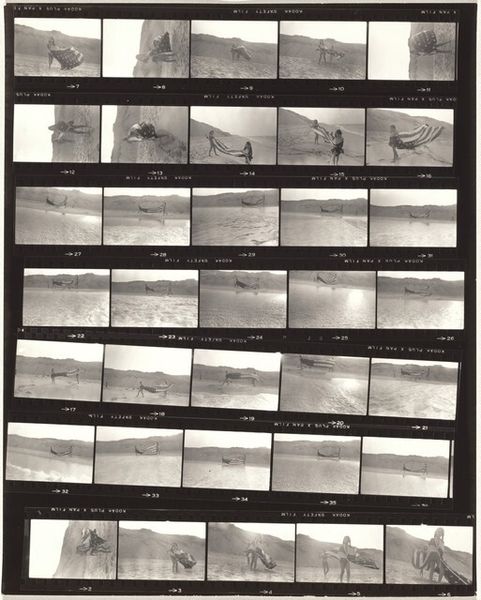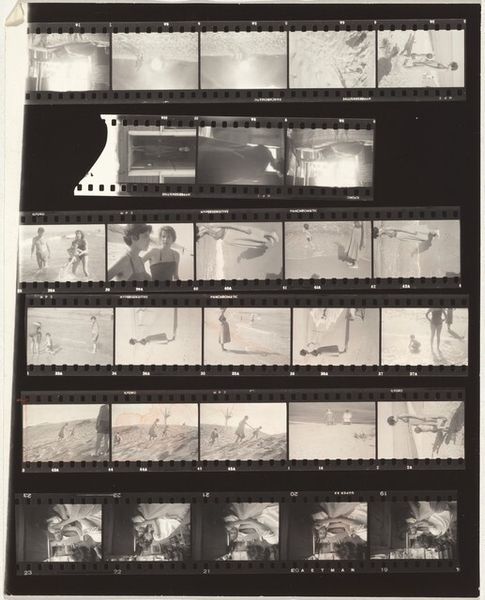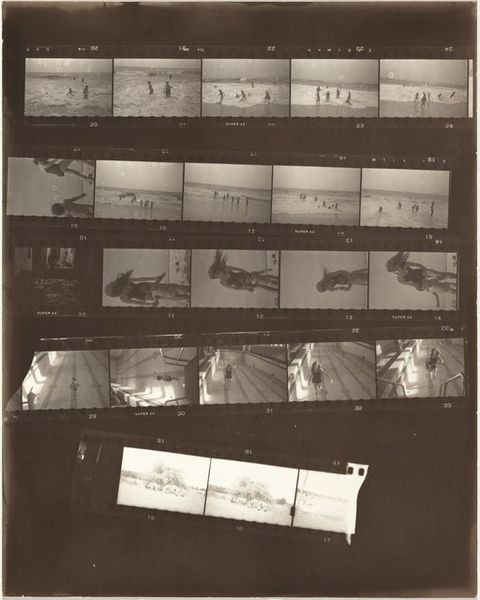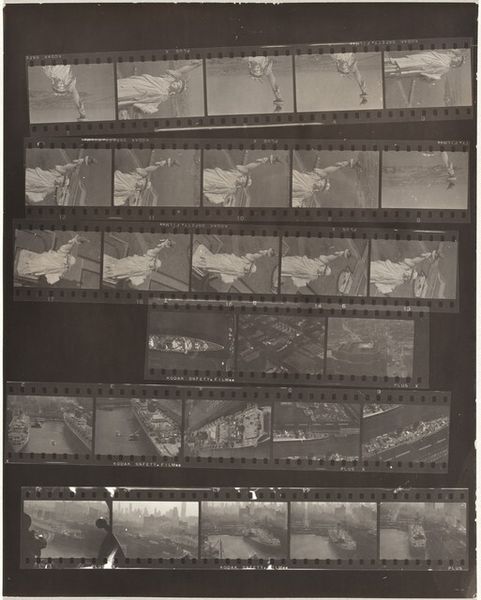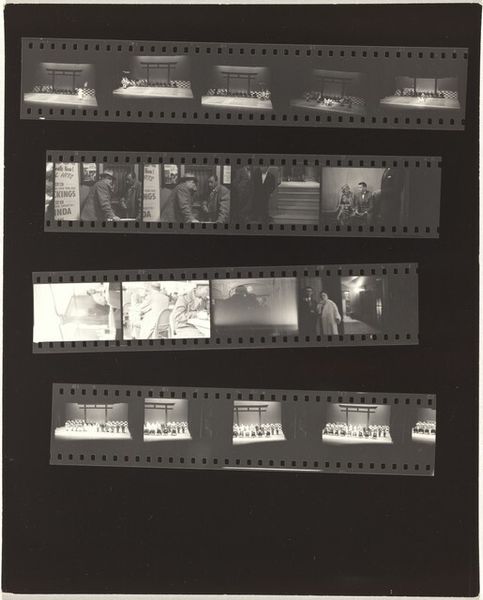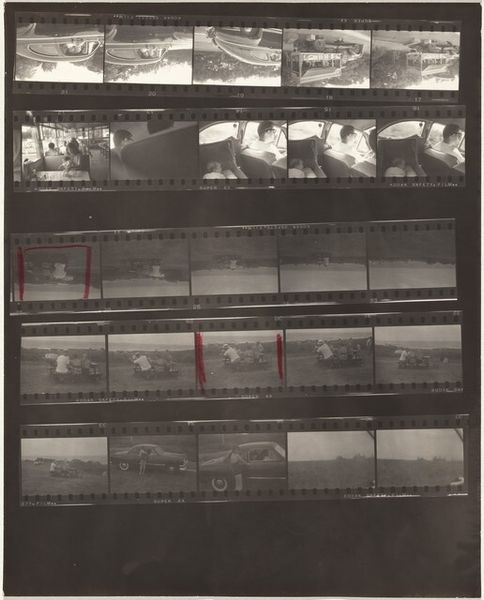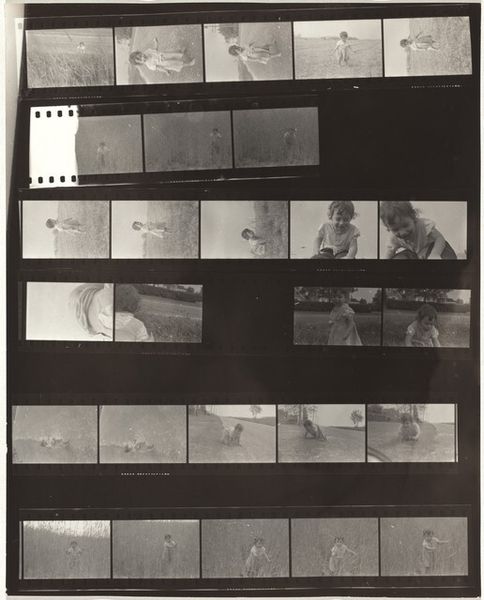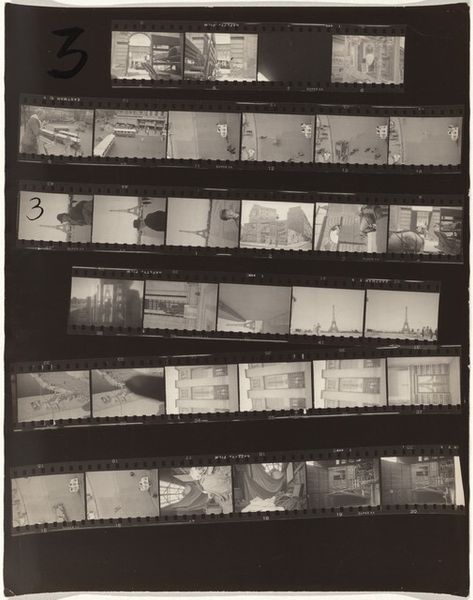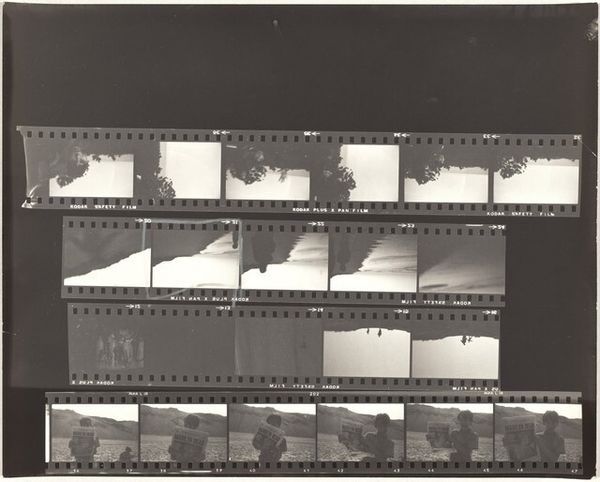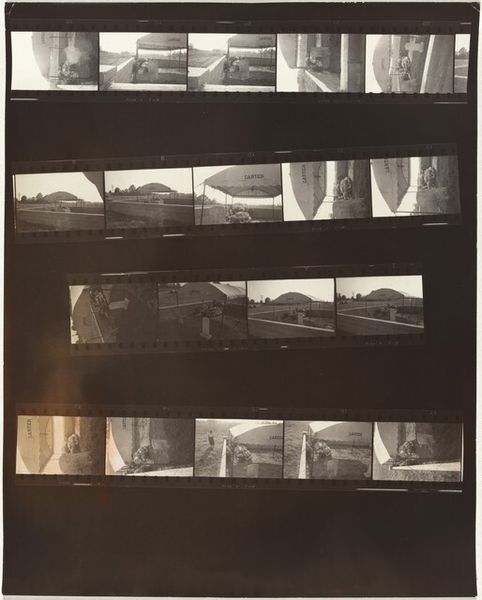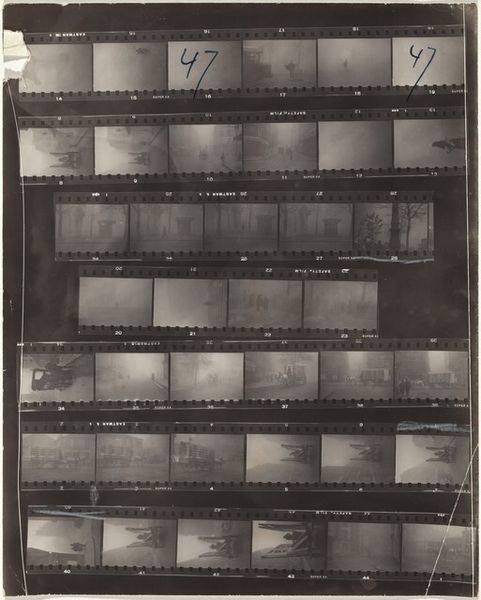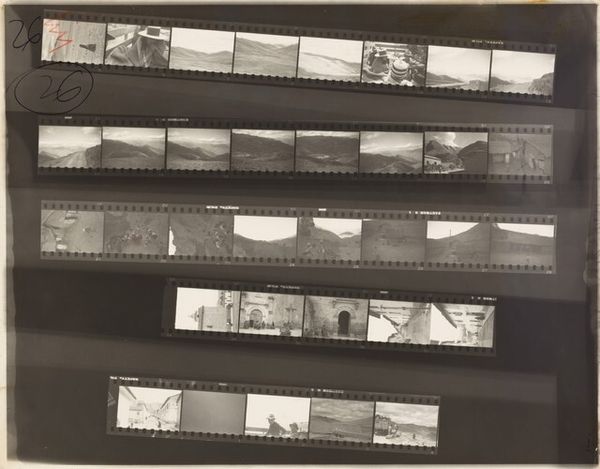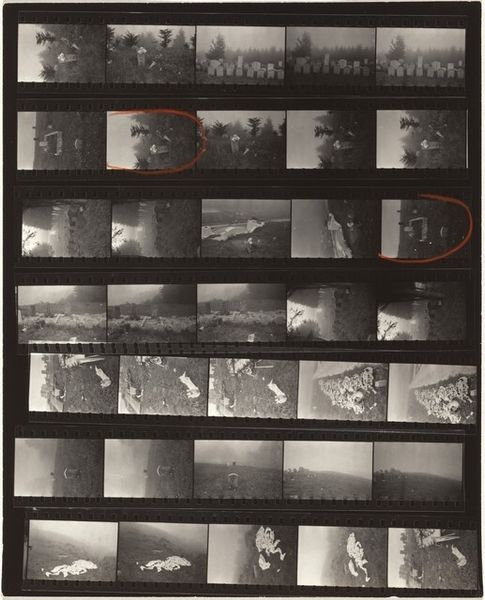
Dimensions: overall: 25.2 x 20.1 cm (9 15/16 x 7 15/16 in.)
Copyright: National Gallery of Art: CC0 1.0
Editor: Robert Frank's "Family--Wellfleet 11," a gelatin-silver print from 1962. It’s striking to see this contact sheet filled with seemingly personal, intimate moments, almost like eavesdropping on someone’s private world. What do you make of it, especially within the context of Frank's other work? Curator: It’s interesting you use the word 'eavesdropping' – I think that hits on something crucial about the image and Frank's practice more generally. After his groundbreaking work, "The Americans", which captured a certain raw, often unflattering, side of American life, here we see him seemingly turning inward, to his own family. But is it truly private? Or is the presentation as a contact sheet – something inherently public facing – a deliberate act? Think about how images, particularly those of family and intimacy, circulate in society. Editor: I hadn’t considered the implication of showing a contact sheet! I guess I was too focused on the personal elements of each individual photo. Curator: Exactly. Consider the cultural fascination with the ‘snapshot aesthetic’ which rose to prominence precisely at this moment in the history of art and of the photographic medium. How do these ‘imperfect’, raw images function compared to, say, idealized portrayals of family that appear in advertising of the same period? Frank presents something far removed from this idealized version. The sequencing and arrangement invite us to construct our own narrative of what “family” is, beyond sentimental notions of kinship. Do you find there is anything here about family, gender or intimacy that speaks particularly powerfully? Editor: I suppose seeing them all laid out, the repetition, actually makes the images less sentimental and more… analytical? Almost scientific, and somehow darker. I didn’t expect that from pictures of a family. Curator: That tension between the intimate and the analytical is precisely where the image gains its power. It asks us to consider the performance of family, the staging of intimacy, and the role photography plays in shaping those perceptions. Editor: That really gives me a lot to think about – it's fascinating how this piece uses a personal subject to comment on broader societal perceptions. Thanks! Curator: My pleasure. It highlights how seemingly private images inevitably become part of a larger, public conversation, shaping how we understand ourselves and each other.
Comments
No comments
Be the first to comment and join the conversation on the ultimate creative platform.

